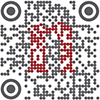|
||||||||
|
||||||||
|
Hello Nature readers, |
||||||||

|
||||||||
| The virus that causes COVID-19 probably originated in bats living in southern China. From there, many scientists think it infected an intermediate animal that passed it to people. (Bernhardt Reiner/Prisma by Dukas Presseagentur via Alamy) | ||||||||
COVID origin spotlight falls on raccoon dogsFive years on from the beginning of the COVID-19 pandemic, scientists are still trying to pin down where the virus came from. The number one suspect is the raccoon dog (Nyctereutes procyonoides) because they were being sold at the market where scientists believe the first cases spilled over from animals to humans, and were probably involved in passing another, related, virus to people in 2003. However, raccoon dogs have been studied as viral hosts more than other animals, including ones also present at the market, says evolutionary biologist Michael Worobey. So, there could be other, less well-studied candidates. Nature | 7 min read |
||||||||
NIH grants still frozen despite lawsuitsThree weeks after the Trump administration issued a directive to freeze payment on all federal grants and loans, almost all grant-review meetings remain suspended at the US National Institutes of Health (NIH). This is despite a judge putting it on hold after lawsuits challenging the order’s legality. The freeze has continued thanks to a ‘loophole’ in the process that the administration is exploiting. To run a grant-review session, the NIH must post their plans on a publication called the Federal Register, which the Trump administration has halted. Some legal scholars say this approach to withholding funds is illegal. Nature | 7 min read |
||||||||
| ||||||||
|
||||||||
|
||||||||
Use the brain to design better citiesNeuroscientist Robin Mazumder proposes the concept of ‘neuromimicry’ to explore how we use the design of the brain to influence urban planning. For instance, we could separate the districts of a city by activity – as specific parts of the brain have specialized functions – to pool resources, and improve the experience of transport networks by making them better connected. “Neuromimicry points to how we can intentionally design evidence-informed thriving cities in a rapidly urbanizing world to support planetary health,” Mazumder writes. Nature Human Behaviour | 9 min read |
||||||||
Five best science books this weekAndrew Robinson’s pick of the top five science books to read this week includes an environmental horror story in graphic-novel form and an explanation of how humans stay alive in a world of diseases. Nature | 4 min read |
||||||||
Futures: CyclesA young man watches history repeat itself in the latest short story for Nature’s Futures series. Nature | 7 min read |
||||||||
Podcast: Binary ratings curb discriminationRacial discrimination could be eliminated from workers’ ratings by switching from a five-star system — which allows people to impart their personal opinions — to a thumbs up or down. In a study of an online platform that connected customers to workers who performed home repair jobs, researchers found that with a five-star rating system, people they categorized as ‘non-white’ had lower ratings and got paid less than their white counterparts. When they changed the system to thumbs up or down, which focused raters on simply marking the service as good or bad, the effect disappeared. Nature Podcast | 32 min listenSubscribe to the Nature Podcast on Apple Podcasts, Spotify or YouTube Music, or use the RSS feed. |
||||||||

|
||||||||
Quote of the day“It’s not if, it’s when.”The estimated chance that the asteroid known as 2024 YR4 will impact the Earth in 2032 has dropped from 3.1% — the greatest such threat ever recorded — to 1.5%. It is expected to keep dropping, says Richard Moissl, head of the European Space Agency’s Planetary Defence Office, but it is only a matter of time before a more serious threat comes along. (Nature | 5 min read) |
||||||||
|
|
||||||||
|
||||||||
|
|
||||||||
Free newsletters from NatureWant more? Update your preferences to sign up to our other Nature Briefing newsletters:
|
||||||||
Access Nature and 54 other Nature journals
Nature+ is our most affordable 30-day subscription, giving you online access to a wide range of specialist Nature Portfolio journals, including Nature. |
||||||||
|
||||||||
|
You received this newsletter because you subscribed with the email address: monia@podam.pl Please add briefing@nature.com to your address book. Enjoying this newsletter? You can use this form to recommend it to a friend or colleague — thank you! Had enough? To unsubscribe from this Briefing, but keep receiving your other Nature Briefing newsletters, please update your subscription preferences. To stop all Nature Briefing emails forever, click here to remove your personal data from our system. Fancy a bit of a read? View our privacy policy. Forwarded by a friend? Get the Briefing straight to your inbox: subscribe for free. Want to master time management, protect your mental health and brush up on your skills? Sign up for our free short e-mail series for working scientists, Back to the lab. Get more from Nature: Register for free on nature.com to sign up for other newsletters specific to your field and email alerts from Nature Portfolio journals. Would you like to read the Briefing in other languages? 关注Nature Portfolio官方微信订阅号,每周二为您推送Nature Briefing精选中文内容——自然每周简报。 Nature Portfolio | The Springer Nature Campus, 4 Crinan Street, London, N1 9XW, United Kingdom Nature Portfolio, part of Springer Nature. |


